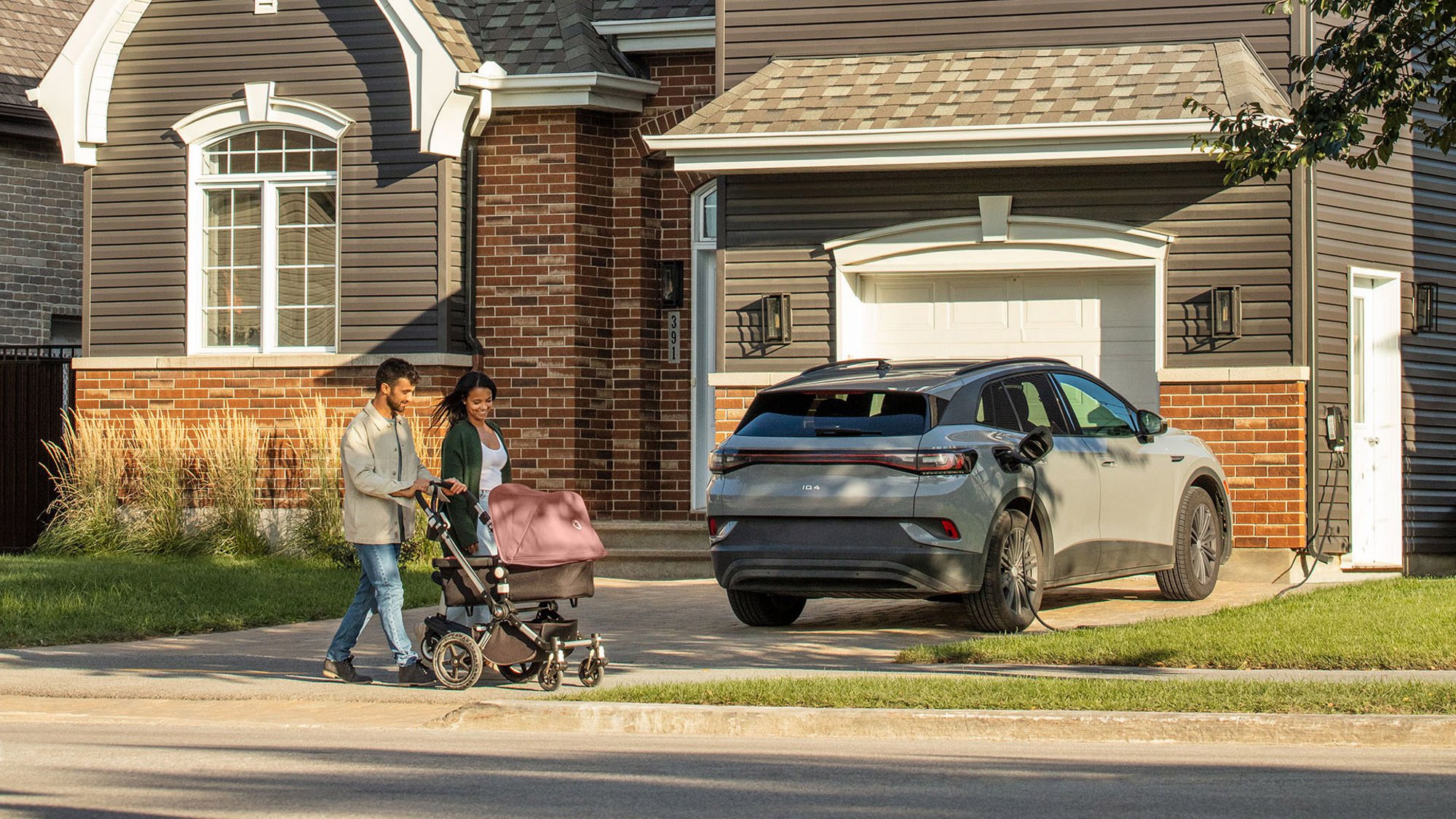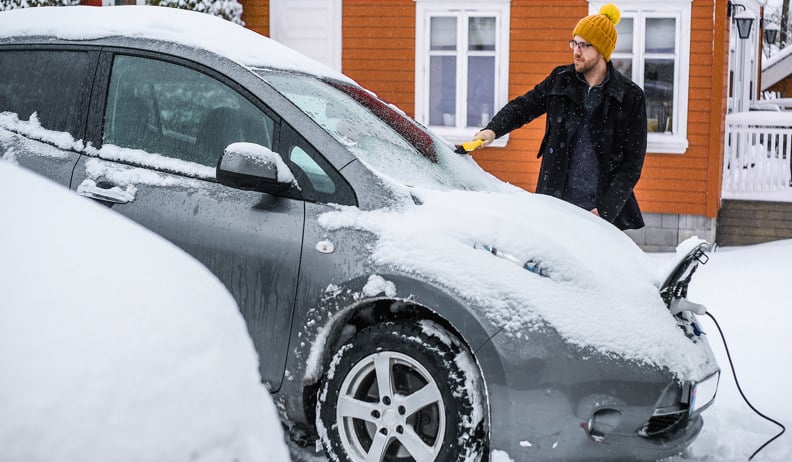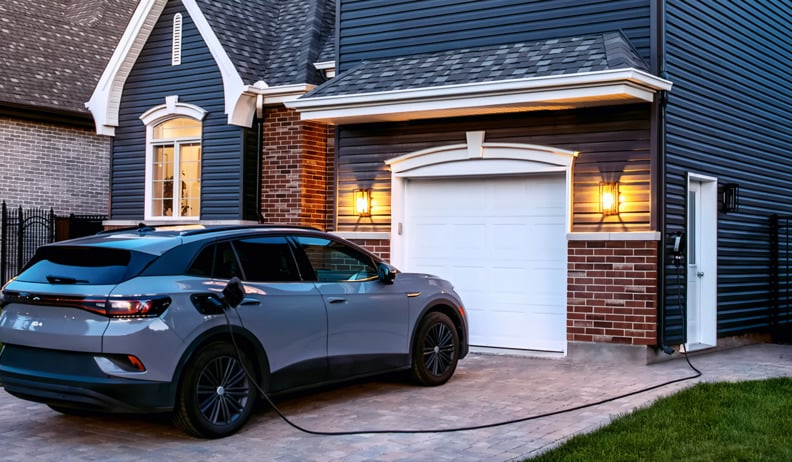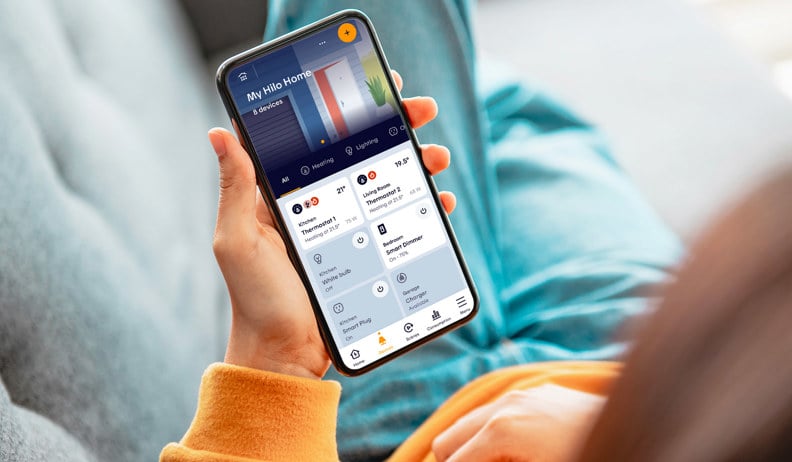The Hilo EV charging solution: A smart way to save
So you’ve decided to get a home charger — that’s great! But what if we told you it could also help you save money?

Automation takes the stress out of charging
Hilo’s EV charging solution lets owners of a compatible charging station automatically shift charging outside of peak demand events. These events can happen up to 30 times each winter, during periods when the grid is under heavy demand.
How does it work?
Hilo works with Hydro-Québec’s Rate Flex D, which offers a lower price for electricity most of the winter to help you save. During peak demand events, the price goes up — that’s where Hilo steps in, automatically managing your connected devices, including your compatible charger, to reduce electricity use and help you hold onto those savings.
It’s simple: plug in your vehicle whenever you want, and Hilo will make sure it doesn’t charge during peak events. These events take place between 6 a.m. and 10 a.m. or between 4 p.m. and 8 p.m., sometimes both. Once the event is over, charging resumes automatically.
Why reduce your energy use during these events?
During periods of extreme cold, the electrical grid is under heavy strain. By shifting electricity demand outside of peak periods — which mostly occur during cold snaps — we avoid having to buy less clean energy from our neighbours.
What you need — and what it costs
The EV charging solution is free — all you need is the Hilo hub (provided at no cost*) and to add your charging station to the Hilo mobile app.
EVduty chargers from Elmec are the first to be compatible with Hilo’s smart home service. They just need to be equipped with the Smart-Home upgrade. If you already own a standard model, the Smart-Home upgrade (a $100 value) will be automatically applied to your charger, at no cost, through the Hilo app, thanks to a partnership with Elmec.
* With a 12-month commitment to participate in automation during peak demand events and acceptance of the Participant Agreement.
Multiple benefits
Average savings of $155
By automating the shift of your EV charging outside peak demand events, you maximize your household’s overall electricity savings. Combine the charging solution with other Hilo products, like smart thermostats, and you could save an average of $155* on your winter electricity bill. And looking ahead — we like to dream! — it may even be possible in a few years to use your vehicle to supply electricity back to the grid with bidirectional chargers.
Peace of mind
The Hilo solution automates the management of your charger — stopping charging when needed, then starting it up again at the right time. That means you save both time and effort. You can use your vehicle whenever you want, and you can also choose to exclude your charger from Hilo’s automation during an event (though that’s not recommended if you’re on Rate Flex D, since electricity prices are much higher during events).
A more resilient Quebec
By shifting your EV charging outside of peak periods, Hilo’s solution helps free up electricity so the grid can better meet the growing demand — driven in part by electric vehicles themselves.
Ready to get started?
To take advantage of Hilo’s EV charging solution, all you need is a compatible charging station and the Hilo hub (provided at no cost)!
Thinking about getting an electric vehicle and want to learn more about the different types of chargers? Find out more here.
Want to know how much you could save with Hilo? Take this test!
*The average potential savings amount is based on the actual consumption of Hilo customers using both a smart heating solution (across all device and housing types) and a smart water heater solution. The calculation was made using the Rate Flex D pricing in effect at the time. This average is derived from data collected between December 2022 and March 2025, based on a scenario of 100 hours of participation or 25 peak demand events. Potential savings reflect the difference between Rate Flex D and the base rate (Rate D), including applicable taxes. The estimate factors in the use of a smart water heater controller. The savings shown are based on trials carried out with customers who used this solution during the 2024–2025 winter season. Actual savings may vary depending on the level of customer participation and the number of peak demand events during the winter.



